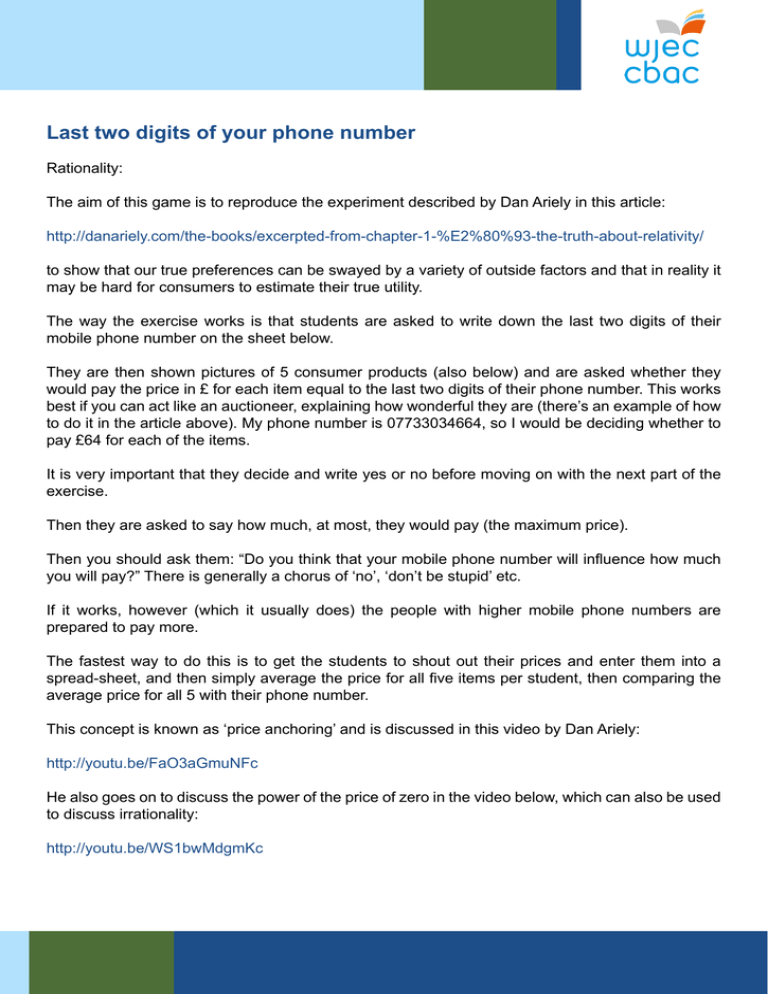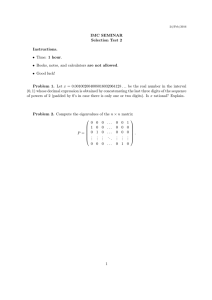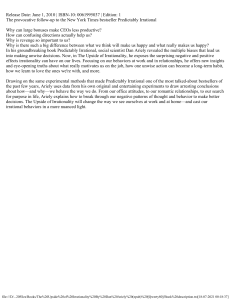Last two digits of your phone number
advertisement

Last two digits of your phone number Rationality: The aim of this game is to reproduce the experiment described by Dan Ariely in this article: http://danariely.com/the-books/excerpted-from-chapter-1-%E2%80%93-the-truth-about-relativity/ to show that our true preferences can be swayed by a variety of outside factors and that in reality it may be hard for consumers to estimate their true utility. The way the exercise works is that students are asked to write down the last two digits of their mobile phone number on the sheet below. They are then shown pictures of 5 consumer products (also below) and are asked whether they would pay the price in £ for each item equal to the last two digits of their phone number. This works best if you can act like an auctioneer, explaining how wonderful they are (there’s an example of how to do it in the article above). My phone number is 07733034664, so I would be deciding whether to pay £64 for each of the items. It is very important that they decide and write yes or no before moving on with the next part of the exercise. Then they are asked to say how much, at most, they would pay (the maximum price). Then you should ask them: “Do you think that your mobile phone number will influence how much you will pay?” There is generally a chorus of ‘no’, ‘don’t be stupid’ etc. If it works, however (which it usually does) the people with higher mobile phone numbers are prepared to pay more. The fastest way to do this is to get the students to shout out their prices and enter them into a spread-sheet, and then simply average the price for all five items per student, then comparing the average price for all 5 with their phone number. This concept is known as ‘price anchoring’ and is discussed in this video by Dan Ariely: http://youtu.be/FaO3aGmuNFc He also goes on to discuss the power of the price of zero in the video below, which can also be used to discuss irrationality: http://youtu.be/WS1bwMdgmKc





